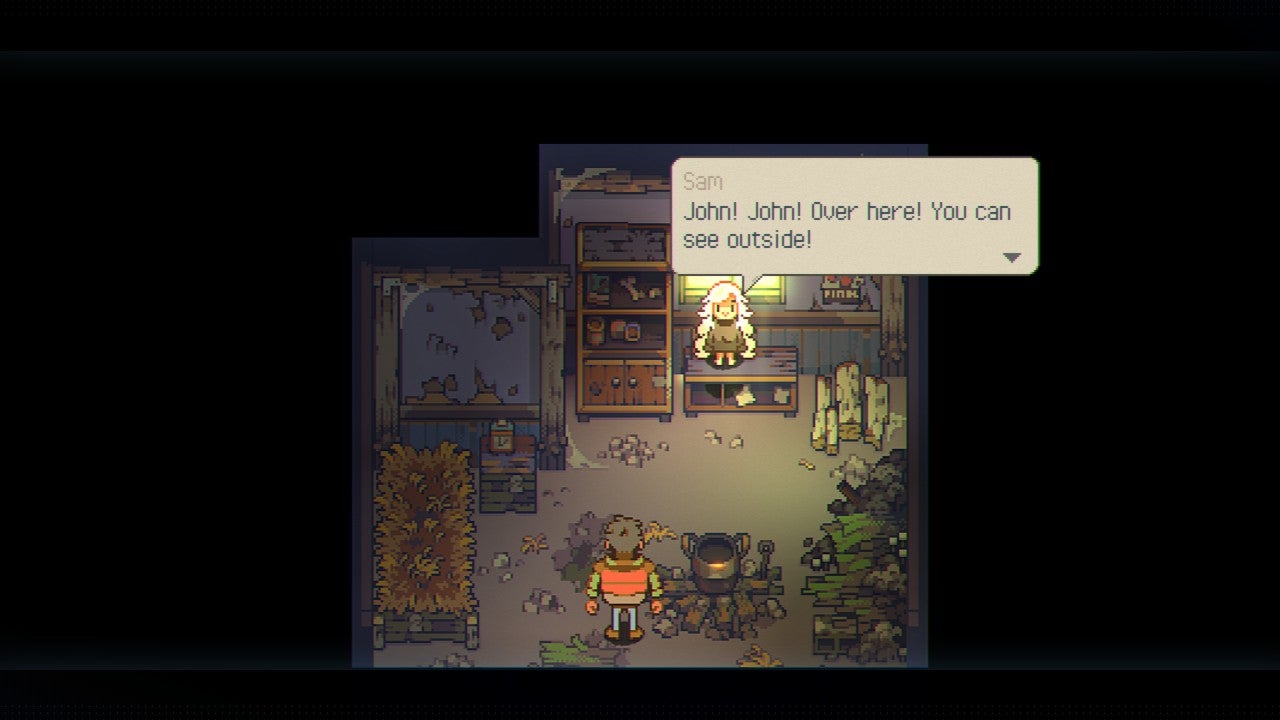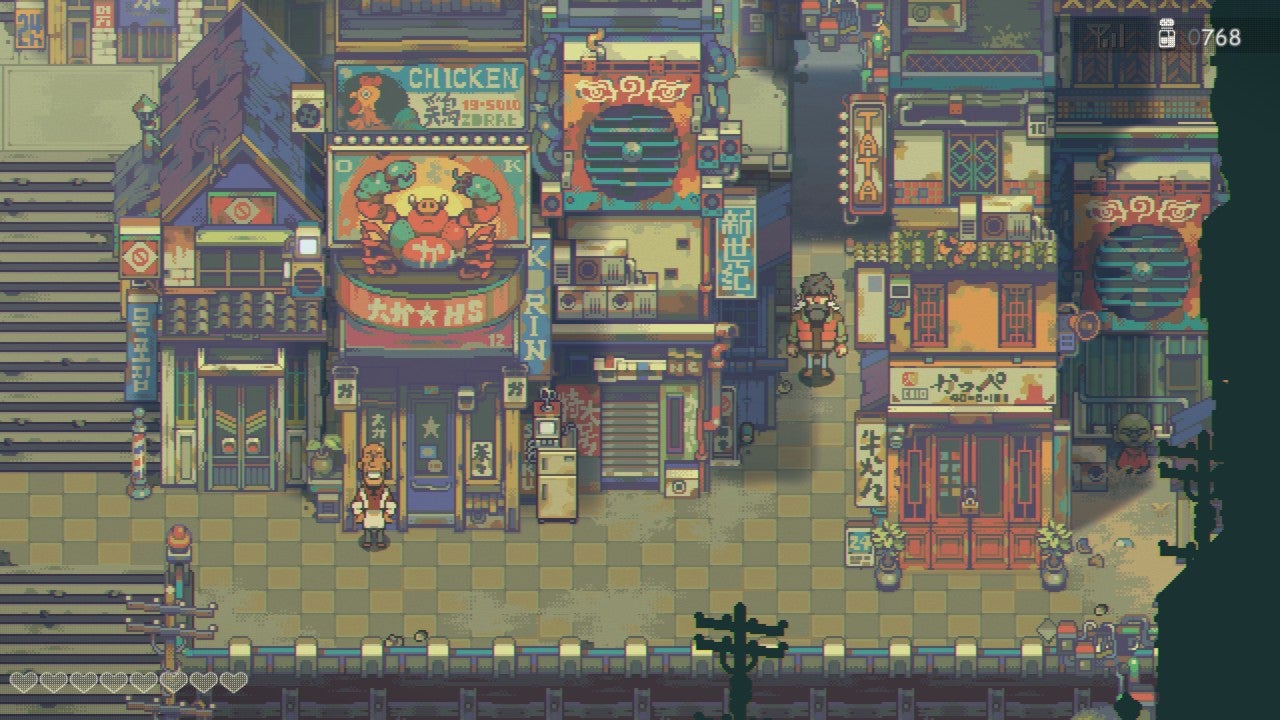The story follows Sam, a small girl with a mane of white hair, and John, who looks a bit like a black Russian terrier - his face completely obscured by his fringe, the rest of his face taken up by his beard. John, who never so much as utters a word, took Sam in after she appeared in the underground community of Potcrock Isle out of nowhere. Even though they’re very poor, they enjoy life together, until one day an apparition that looks just like her inspires Sam to break Potcrock’s cardinal rule never to travel to the surface. They are expelled and put on a train to the surface. As it turns out, the surface is…mostly fine? But a dangerous substance called Miasma is an ever-present threat, and the reason John and Sam must move onwards rather than settling in the first place they find. This straightforward setup takes several hours to unfold, because Pixpil made absolutely sure to thoroughly introduce you to John and Sam before sending you off with them. Combat is something of an afterthought and a last resort, because what person who walks around with a little girl would want to regularly get in danger? When the need arises however, John is handy with a small array of weapons - you start off with his trusty frying pan and a set of bombs, and gain a short-range shotgun and a flamethrower over the course of the first few chapters. It’s a strange arsenal that sees you through this friendly post-apocalypse, borne of a world that’s retained a few technologies and lost many others. In action reminiscent of classic Zelda, you navigate John and Sam between sections of the map in every direction and solve a few environmental puzzles to get ahead, which also involve occasionally separating the two. If either touches an enemy, you lose a heart out of the very generous health pool, which you can replenish with the food John cooks wherever he can find a hob - that frying pan serves more than one purpose, after all. The puzzles are easy enough - I reckon they’ll be too easy for most people because they were just right for me. Still I absolutely want to acknowledge the work that must have gone into them nonetheless - solutions hardly ever repeat, so you never feel as if you’re doing the same thing ten times in a row, and considering how few actions both John and Sam really have, the amount of variety here is a true feat. No boss battle is like the other, too, although those are also on the easy side. The only real issue I have with Eastward on the whole is pacing. This isn’t about the combat, and it’s not so much about the journey - it’s a story about a found family that just wants to settle in a new home. As such, a lot of its 35 plus hour runtime takes place in towns and cities, where John helps out by running a multitude of errands. Here, you do a lot of backtracking, and I found myself hankering for the action to pick up again. But slow to its rhythm and you’ll find Eastward is an incredibly rewarding slice-of-life story. Every fresh location introduces you to new, memorable characters, and each town is stuffed with people who pack a lot of personality in even the very few lines they have. You learn so much about the communities in Eastward and how they function, and every bit of dialogue is extremely well-written, which is also down to some very good localisation. I was absolutely powerless against Sam from the first minute on, which isn’t just thanks to the writing, but to brilliant character sprite animation as well. She is so cute! She just randomly volunteers a long-suffering John to all kinds of jobs, then talks enough for the two of them. Her walking animation involves her opening and closing her mouth, as if she truly never stops talking. I know very few games that actually do small children well, and Eastward is immediately up there as one of the best. Eastward is a game that loves games - specifically Japanese classics such as The Legend of Zelda, early Dragon Quest games and Final Fantasy, among others, but many other aspects of culture from the wider Asian diaspora besides, with a dash of its very own spice. In Potcrock Isle, you meet a character who is modelled after Studio Ghibli founder Hayao Miyazaki - his animations involve lighting himself a cigarette and doing radio gymnastics. Pixpil even included a whole second game within its own game, a JRPG called Earth Born (wink, wink!) Eastward is never a copy, often a homage, something that extends to its twists and turns that I won’t spoil here - though I will say that the post-apocalyptic setting is more than window dressing, and be warned the story does go to some dark places. The pacing to get there might be a little off at points, but there’s so much to recommend besides. I came for the beautiful visuals, and I stayed for the type of kind, warm game not many developers make anymore.




